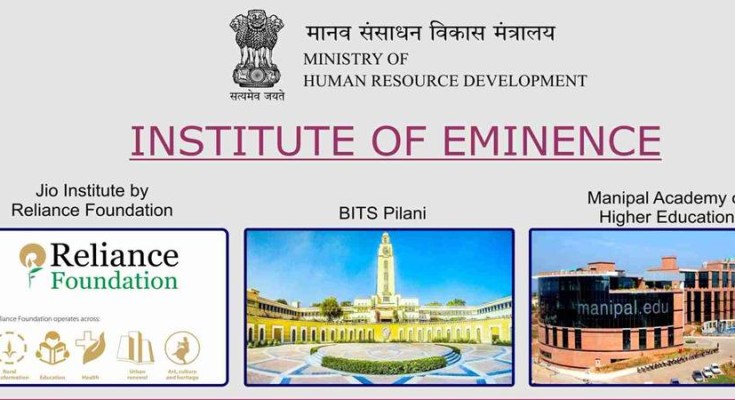Context
-
The Ministry of Human Resource Development has taken the decision to give Institution of Eminence (IoE) status to six institutes
The three pillars for growth (Make a diagram of these)
-
Expansion
-
Inclusion and
-
Excellence
Research output of India among other countries
-
The growth of these and other national institutions will also depend on policies to raise the expenditure on R&D as a percentage of GDP.
-
Among countries with a comparable research output, India with 0.8% R&D spending trails Russia, Brazil, South Korea and even Singapore, according to UNESCO data.

Issues at hand
-
It should be ensured that this conditional recognition is fulfilled transparently, and that it meets the requirements on governance structure, infrastructure and faculty within three years.
-
That there is need for urgent reform became clear during the selection process: the empowered committee found that State universities had a low output because some of them had several faculty members recruited on contract basis, with no incentive to do research.
-
Such ad hocism must end, and public universities should be insulated from political pressures.
-
Vice-chancellors should be appointed on merit, free of ideological biases.
-
With good governance structures and significant new financial grants, the selected public institutions will be able to innovate on courses and encourage research.
-
The quality is uneven, and at the bottom levels, abysmal.
-
At the same time, initiatives by charitable trusts — which have declined due to political support for commercialisation and aid cuts — must be welcomed, as this would help open more affordable colleges and universities.
Conclusion
-
The idea of developing centres of higher learning advances the Nehruvian vision of building ‘temples of modern India’.
-
Islands of eminence can inspire, but the long-term goal should be to raise the quality of higher education in all institutions through academic reform.
-
The Institution of Eminence (IoEs) can become models of autonomy, academic innovation and equity of access, and lead to a transformation of higher education.
Source: